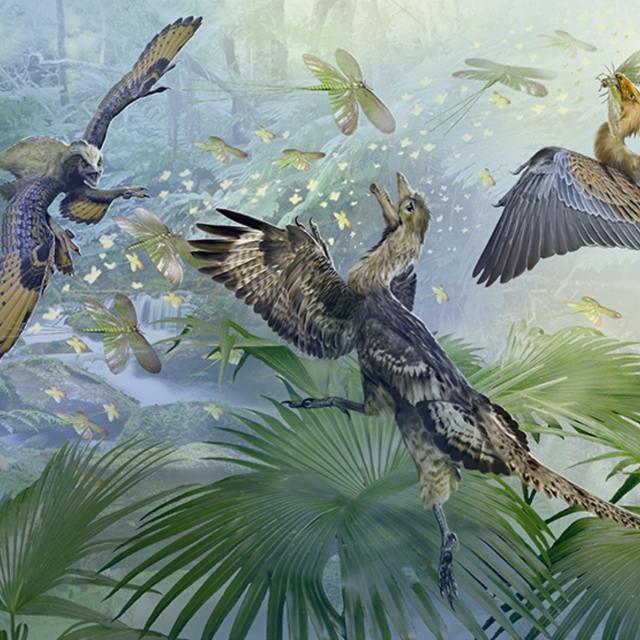MOOC List is learner-supported. When you buy through links on our site, we may earn an affiliate commission.

MOOC List is learner-supported. When you buy through links on our site, we may earn an affiliate commission.
Syllabus
WEEK 1
Bird Anatomy
In Lesson 1, we explore the anatomy and adaptations of birds, and meet the Victorian scientists who first suspected the link between the terrible lizards and modern birds. In order to fly, birds have undergone a series of anatomical specializations that distinguishes them from other vertebrates. However, many of the most striking and anatomically unusual traits of birds originated over 230 million years ago with the very first theropod dinosaurs. Just a quick note before you get started: 'Palaios' is the Greek word for 'ancient', so palaeontology or paleontology is the study of ancient life. Both spellings are correct, with palaeontology used in Britain, and paleontology more common in the US.
WEEK 2
Survey of Non-Avian Theropods
In the wake of the Permian mass extinction, the prehistoric world was ripe for the taking. All the world’s landmass was consolidated into the single supercontinent: Pangaea. With no seas standing in their way, new terrestrial animal lineages were able to exploit new habitats all across the globe. Archosaurs, meaning ‘ruling reptiles’, came to dominate Triassic ecosystems. However, dinosaurian archosaurs were not the top predators. Instead, crurotarsans sat undisputed at the top of the food chain. The first theropods were small, but agile carnivores, and although they started out as the Darwinian equivalent of the mail room clerks, by the next geological period (the Jurassic), they were large and in charge. In Lesson 2, we will introduce you to some of the earliest theropods, and explore the anatomical secrets to their survival and eventual success. We will also meet the largest land predators of all time.
WEEK 3
Coelurosaurs I
In the previous lesson, we explored how the various theropod lineages adapted to their role as apex predators. In this lesson, we will explore a new group of theropods, as much characterized by their speed and agility as their predatory prowess. The coelurosaurs were the most successful and diverse of all the theropods, and included herbivores, the smallest of all dinosaurs, and, of course, the mighty tyrannosaurs.
WEEK 4
Coelurosaurs II
Dinosaurs had long been thought of as overgrown reptiles; cold blooded, swamp bound, with meagre intelligence and little to no social complexity. The ‘Dinosaur Renaissance’ was a revolution in palaeontological thinking that entirely transformed that traditional image of dinosaurs. In Lesson 4, we will see how new research and discoveries over the past fifty years have shaped our modern image of dinosaurs into one of energetic, intelligent animals, that likely displayed many of the complex social behaviours witnessed in modern birds. You’ll also meet the deinonychosaurs, A.K.A. ‘the raptors’, and you will learn the leading theories for how one group of dinosaurs learned to fly.
WEEK 5
The Avian World
66 million years ago, an asteroid the larger than Mt. Everest collided with the earth and brought about the extinction of the dinosaurs…except birds! Now that you’re familiar with some of their larger Mesozoic ancestors and their bird-like features, it’s time to meet the avian lineage proper. With the evolution of flight, birds could exploit habitats and resources that were literally unreachable by other animals. The evolution of birds has been one of diversification. Flightlessness has evolved numerous times, as have specializations for insectivory, swimming, and predation. Although theropods may no longer dominate the land, they still rule the skies.
MOOC List is learner-supported. When you buy through links on our site, we may earn an affiliate commission.
MOOC List is learner-supported. When you buy through links on our site, we may earn an affiliate commission.
